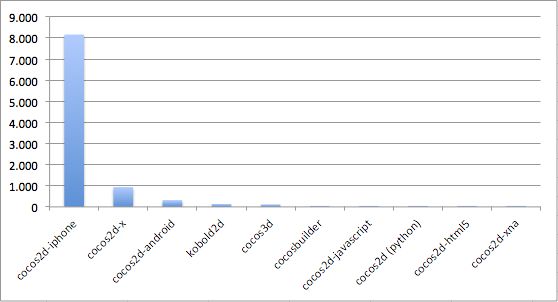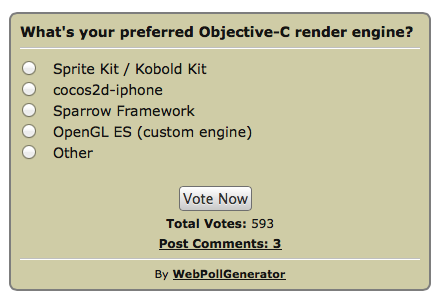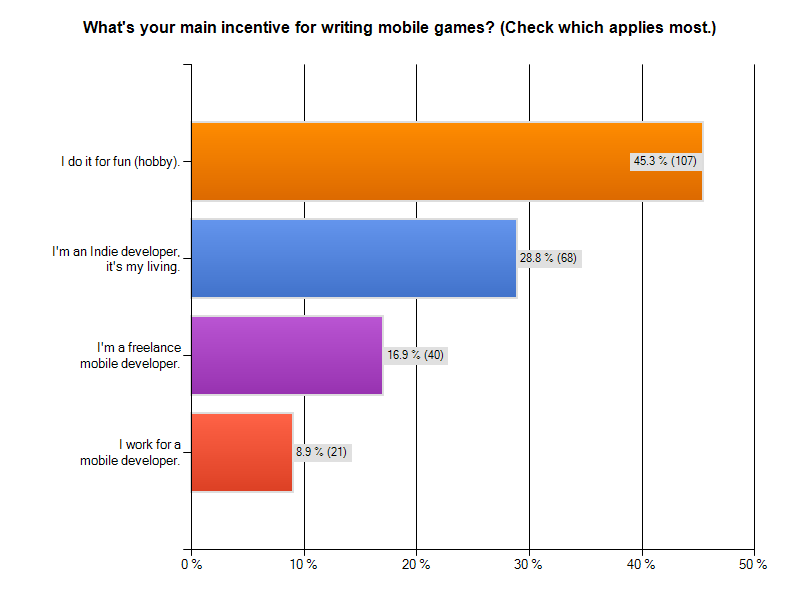With the release of iOS 7 (ETA: Tuesday, Sept. 10th):
Kobold Kit will be available as open source under the MIT License!
We spent a lot of thoughts on how we like to run an open source project. And also why. I’ll start with an executive summary with more (perhaps too many) details in the text.
The Idea: make the project as open and inviting as possible. Let contributors gain control over and take on responsibility for the project based on their contributions. Provide them with ways to promote their work on their own accord.
The Goal: build the Sprite Kit game engine with the help of many developers.
Kobold Kit is supposed to become the “patron project” under whose roof the most valuable Sprite Kit extensions are combined. Website, forum, wiki, blog and store are extended playgrounds shaped by community members. If you’re part of the project, we want you to proudly present and benefit from it.
In essence: we want to get out of the way as much as possible and enable anyone to find their place in the project. Guidance, not dictating, is our guideline.
For Kobold Kit (the Sprite Kit game engine) we’re working on Super Stick Spy, a 2D platformer game. Like so many others, we started out using the (Box2D) physics engine that’s so neatly integrated in Sprite Kit to get everything up and running quickly.
But we knew full well that for the final product, we’ll have to scrap the physics engine altogether and follow best practices when it comes to platformer-programming.
Now with the demo version nearing completion (see video) I can tell you in full detail why you don’t want to use a physics engine for a 2D platformer!
Moving Platform Hell
A moving platform with physics needs to be a dynamic body. Don’t even try moving static bodies, at least in Box2D that will end up in jumpy movement of the body. Though kinematic bodies work better (if available).
The player or other game characters standing on a moving physics body will have the platform slide underneath their feet. The characters won’t magically move along with the platform! And there is no feature in the physics engine that lets you set this up. You have to program it to synchronize character movement with the platform they’re currently standing on, and end the synchronization as soon as a character lifts its feet up from the platform.
Which can be a problem for downward-moving platforms as the player loses contact with the platform every other frame, starts falling, and lands right back on the platform. To put it in Homer’s words: “Doh, doh, doh, doh, doh, doh, doh …”. So you need to make the character stick to the platform, yet allow him to fall off of the ledges and jump, and possibly also allow him to be forced off the ground by normal collision events (projectile impact, platform moving through a tiny crevice). Continue reading »
How do you measure the popularity of a game engine and compare it with others?
Reminded of the TIOBE Programming Language Index and the Transparent Programming Language Popularity Index I couldn’t find a comparable site measuring game engine popularity.
So I sat down and concluded that I can do a simple manual test rather quickly. These are the measurements anyone can take easily:
- Forum topic, post and member counts (if available)
- Stackoverflow.com and gamedev.stackexchange.com tag counts
- Google search query results
Popularity of Cocos2D Variants
Let’s begin by comparing the popularity of the various Cocos2D variants. The difficulty here lies in properly excluding all the other cocos2d variants. That cocos2d-iphone is commonly referred to as just “cocos2d” makes it difficult to measure just the cocos2d-iphone popularity and to remove that number from all other engine variants.
I tried to overcome this by including or excluding specific tags in Stackoverflow and Gamedev searches:
- cocos2d-iphone: [cocos2d-iphone] or [cocos2d] -[python] -[java] -[javascript] -[c++] -[html5]
- cocos2d-x: [cocos2d-x] or [cocos2d] [c++] -[python] -[java] -[javascript] -[html5]
- cocos2d-android: [cocos2d-android] or [cocos2d] [android] -[cocos2d-x] -[c++] -[python] -[objective-c] -[html5]
- cocos2d-javascript: [cocos2d-js] or [cocos2d-javascript] or [cocos2d] [javascript]
- cocos2d (python): [cocos2d-python] or [cocos2d] [python]
- cocos2d-xna: [cocos2d-xna] or [cocos2d] [xna]
- cocos2d-html5: [cocos2d-html5]
- cocos3d: [cocos3d]
- kobold2d: [kobold2d]
- cocosbuilder: [cocosbuilder]
Stackoverflow.com tag search results:

Okay, let’s try that again with cocos2d-iphone removed so the other variants can be compared in relation to each other: Continue reading »
For the past two weeks I’ve been running a Cocos2D Developer Survey. As of today, 236 developers started the survey and 189 finished it completely. That’s 80% despite the many questions they had to answer.
Here are the results with my observations. I started the survey also to see if I was on track with KoboldTouch, and whether certain assumptions hold true. Specifically I had a hunch that cross-platform development is only perceived to have great value or appeal. Let’s see if I was right.
Click on each image for full resolution.
Who are you?
I was very curious how many cocos2d developers consider themselves to be hobbyists and indies compared to professionals, who either work for a mobile developer or are taking on freelance jobs as one.
Almost half of those who answered the survey are hobbyists. Nearly 30% consider themselves indies who make a living making mobile games. This is great! Continue reading »
It’s hard to find the right words to describe the launch of KoboldTouch. I can’t think of anything else but WOW! right now. 
I can’t wait to hear what you have to say about KoboldTouch, and then act on your feedback.
For those who were just waiting for the launch:
Sign up on the KoboldTouch product page to get access to KoboldTouch and Essential Cocos2D.
The rest of this post is a summary of what I wrote before on these two-products-in-one. Actually, I think of KoboldTouch & Essential Cocos2D as being much more a service than products. And it’s a full time commitment from myself.
This calls for music! 












